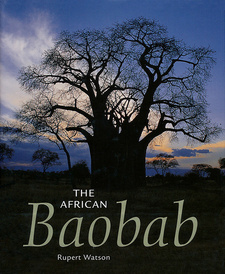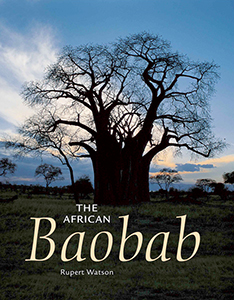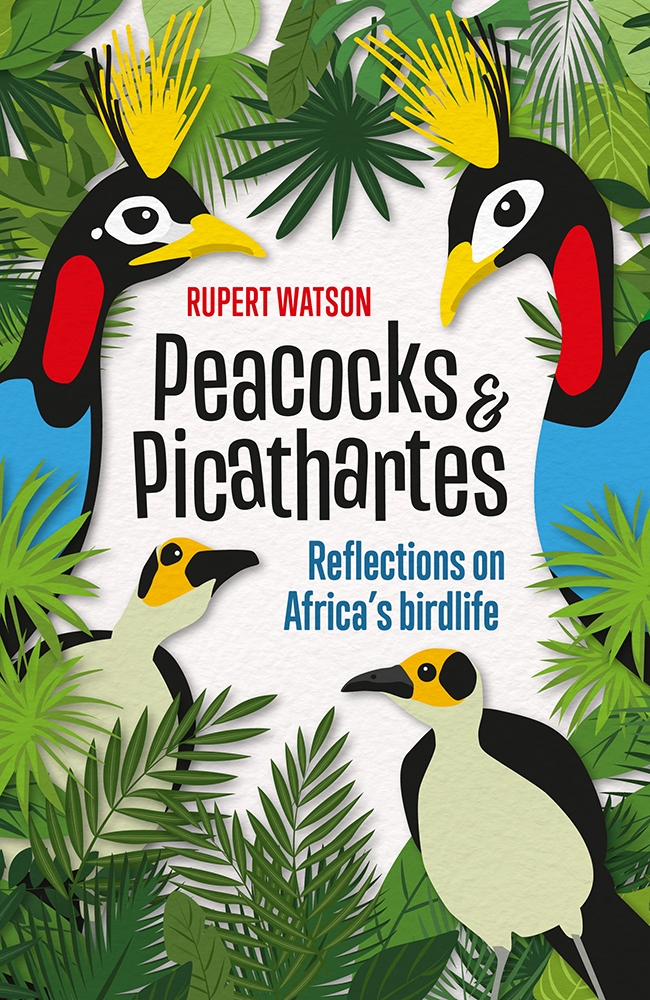The African Baobab, by Rupert Watson

The African Baobab, by Rupert Watson. Struik Publishers, Cape Town, South Africa 2007. ISBN 9781770074309 / ISBN 978-1-77007-430-9
Big baobabs must be old. Can anything grow that huge without taking hundreds, if not thousands, of years to do so? In The African Baobab, author Rupert Watson sketches a profile of thy mysterious tree.
However efficiently their root systems collect water, and no matter what devices they have evolved to limit moisture loss through leaves, given where they grow, big trees must be old trees. That is the voice of good sense, and the most profound science is not going to silence it. Small is certainly not necessarily young in the tree world, but big simply has to be old. And how old is old? Almost anyone with at least a passing interest in baobabs asks the question. The Prussian explorer Friedrich von Humboldt may only just have been exaggerating in calling baobabs the 'oldest organic monuments of our planet' and suggesting they 'would date back to the times of the Pyramid builders' (c. 2 500 BC). Two hundred years ago, Von Humboldt, and other travellers with more fanciful than scientific bents, could make such unfounded assertions without challenge. Today, in the times of written history scattered with dates, chronologies and anniversaries, 'old' has become an increasingly inadequate description of either natural or man-made monuments. The age of everything, from the universe onwards, is questioned, investigated and, if possible, ascertained. Knowing a tree's age does satisfy a certain curiosity, and perhaps enhances the sense of awe and wonder one feels in its presence. It also slots trees into a historical perspective, as witnesses to passing history. Yet at the same time, answering the question 'how old' inevitably risks demystifying these ancient relics. Some may be content just to wonder if Jesus Christ actually prayed under some of the olive trees still growing in what is left of the Garden of Gethsemane, or if there is still an oak in Sherwood Forest which sheltered Robin Hood while he loved Maid Marion. Is it enough to ask if the baobabs at Malindi, on the Kenyan coast, are the very same ones that surely astounded Vasco da Gama? Ageing ancient trees still remains a combination of science, practical good sense, guesswork and wishful thinking. Science's contribution comes largely from carbon dating, a notoriously arcane, and unreliable, way of ascertaining the age of any organic material. Radiocarbon (principally carbon-14) in molecules of carbon dioxide is continually absorbed by green plants from the atmosphere. Once a plant dies the process ceases, and the accumulated radiocarbon steadily declines. The rate of decline is expressed in terms of a half-life - the length of time that half the amount of radiocarbon takes to disappear. Carbon-14 has a half-life of around 5 700 years. The graph of radiocarbon decline is the same for any organism, so dace of death can be estimated by assessing the amount of carbon remaining at the time of measurement. Heartwood, from the centre of a tree, is in all respects dead, and samples from standing trees for carbon dating can usually be extracted by screwing in an 'increment borer' with a T-shaped handle. This technique relies on there being 'original' material in the tree to date, and is obviously not suitable for old baobabs chat are hollow. Even solid baobabs are often so huge chat extracting a sample of wood from the centre of a standing tree would need a borer far bigger and stronger than any produced thus far. The research of E R Swart was published in the May 18ch 1963 issue of Nature. It focused on the results of carbon dating the wood of a baobab felled during the bush-clearing operations before the Zambezi River backed up behind Kariba Dam in Zimbabwe. [...]
This is an excerpt from The African Baobab, by Rupert Watson.
Title: The African Baobab
Author: Rupert Watson
Genre: Tree profile, photobook
Publisher: Struik Publishers
Cape Town, South Africa 2007
ISBN 9781770074309 / ISBN 978-1-77007-430-9
Hardcover, dustjacket, 17 x 21 cm, 200 pages, throughout colour photos
Watson, Rupert im Namibiana-Buchangebot
The African Baobab
The African Baobab inspires wonder, awe and mystery, and has intrigued travellers for hundreds of years.
Peacocks & Picathartes. Reflections on Africa's Birdlife
Peacocks & Picathartes-Reflections on Africa's Birdlife is a celebration of the diversity of African birds.


